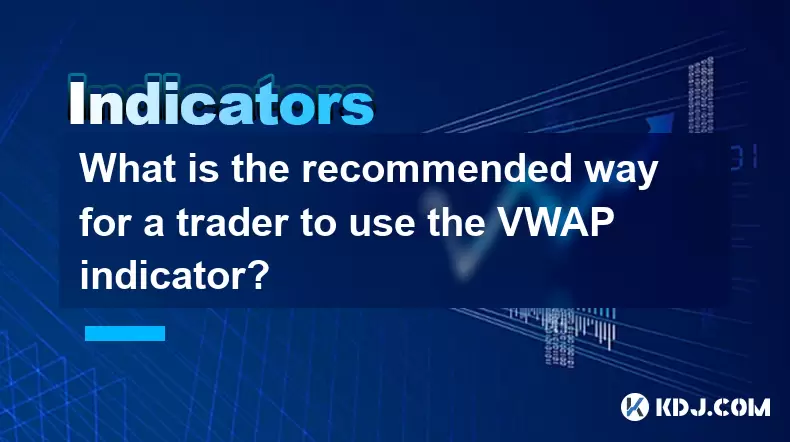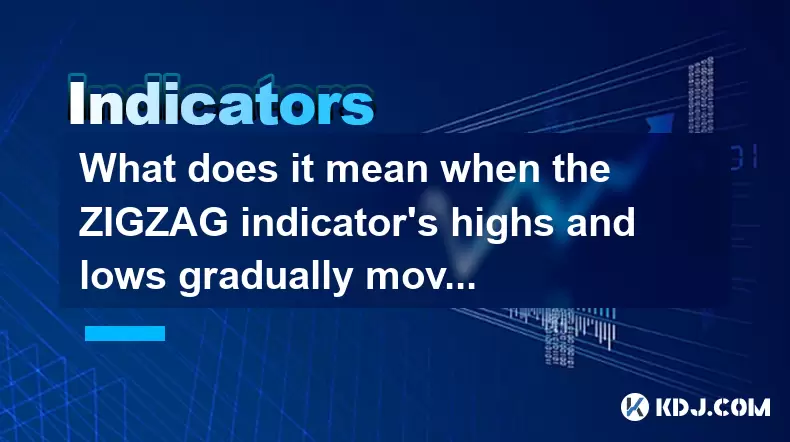-
 Bitcoin
Bitcoin $116900
0.00% -
 Ethereum
Ethereum $4280
5.48% -
 XRP
XRP $3.265
-1.45% -
 Tether USDt
Tether USDt $1.000
-0.01% -
 BNB
BNB $807.0
1.41% -
 Solana
Solana $183.1
2.93% -
 USDC
USDC $0.9999
0.00% -
 Dogecoin
Dogecoin $0.2440
6.50% -
 TRON
TRON $0.3357
-0.88% -
 Cardano
Cardano $0.8178
2.63% -
 Hyperliquid
Hyperliquid $44.13
7.45% -
 Chainlink
Chainlink $21.39
9.09% -
 Stellar
Stellar $0.4524
-0.84% -
 Sui
Sui $3.957
2.13% -
 Bitcoin Cash
Bitcoin Cash $572.7
-2.54% -
 Hedera
Hedera $0.2671
1.54% -
 Avalanche
Avalanche $24.77
4.17% -
 Ethena USDe
Ethena USDe $1.001
0.02% -
 Litecoin
Litecoin $122.3
-1.94% -
 Toncoin
Toncoin $3.432
2.26% -
 UNUS SED LEO
UNUS SED LEO $9.007
0.49% -
 Shiba Inu
Shiba Inu $0.00001396
5.26% -
 Uniswap
Uniswap $11.09
1.64% -
 Polkadot
Polkadot $4.155
4.57% -
 Dai
Dai $1.000
0.00% -
 Pepe
Pepe $0.00001253
5.11% -
 Cronos
Cronos $0.1588
2.67% -
 Bitget Token
Bitget Token $4.512
0.05% -
 Monero
Monero $275.0
0.64% -
 Ethena
Ethena $0.7527
15.10%
What is the recommended way for a trader to use the VWAP indicator?
VWAP combines price and volume to help traders identify trends, time entries, and confirm momentum, making it a powerful tool for intraday crypto trading.
Aug 06, 2025 at 12:56 am

Understanding the VWAP Indicator
The Volume Weighted Average Price (VWAP) is a widely used technical analysis tool in the cryptocurrency and broader financial markets. It calculates the average price of an asset based on both volume and price over a specified time period. Unlike a simple moving average, which only considers price, VWAP incorporates trading volume, making it a more accurate reflection of market sentiment. The formula for VWAP is the cumulative sum of (price multiplied by volume) divided by the cumulative sum of volume. This results in a dynamic line that adjusts throughout the trading session, typically resetting at the start of each new trading day.
For cryptocurrency traders, especially those operating on intraday timeframes, VWAP serves as both a benchmark and a decision-making tool. It helps determine whether the current market price is favorable relative to the average transaction cost during the session. When the price trades above VWAP, it suggests that buyers are in control and the market sentiment is bullish. Conversely, when the price is below VWAP, sellers dominate, indicating bearish momentum.
Using VWAP as a Trend Confirmation Tool
One of the most effective ways to use VWAP is to confirm the direction of the prevailing trend. Traders often look for price action in relation to the VWAP line to validate momentum. For example, if the price of a cryptocurrency like Bitcoin is consistently trading above the VWAP on increasing volume, this reinforces the strength of an uptrend. In contrast, sustained price action below VWAP with high volume suggests a strong downtrend.
To apply this effectively:
- Monitor the position of the price relative to the VWAP line across multiple candlesticks.
- Look for volume spikes when the price crosses the VWAP to assess the strength of the move.
- Combine VWAP with other trend indicators such as moving averages or ADX to filter out false signals.
- Avoid trading counter to the VWAP bias unless there is a clear reversal pattern supported by volume.
This method is particularly useful in high-volatility crypto markets, where short-term trends can emerge quickly and fade just as fast. By aligning trades with the VWAP trend, traders increase their probability of entering at favorable levels.
Employing VWAP for Entry and Exit Points
VWAP is not only a trend filter but also a valuable tool for timing entries and exits. Many institutional traders use VWAP to execute large orders without significantly impacting the market price. Retail traders can emulate this strategy by using VWAP as a guide for optimal execution points.
When considering entries:
- Look for pullbacks to the VWAP line in a strong trend. If the price touches or slightly dips below VWAP in an uptrend and then rebounds with volume, it may present a low-risk long opportunity.
- In downtrends, short entries can be considered when the price rallies toward VWAP and shows rejection with increasing volume.
- Use VWAP crossovers as potential signal triggers, but always confirm with candlestick patterns or momentum oscillators like RSI.
For exits:
- Set profit targets at significant deviations from VWAP, such as 1.5 or 2 standard deviations away (often visualized with VWAP bands).
- Consider exiting partial positions when the price reverts back to VWAP after a strong move, locking in profits.
- Use a trailing stop that adjusts relative to VWAP movement to protect gains.
This approach helps traders avoid emotional decisions and instead follow a systematic method based on volume-weighted pricing.
Combining VWAP with Support and Resistance Levels
Integrating VWAP with traditional support and resistance levels enhances its effectiveness. VWAP often acts as dynamic support in an uptrend or dynamic resistance in a downtrend. When it coincides with a historical price level, the confluence increases the reliability of potential reversals or breakouts.
To implement this:
- Identify key horizontal support and resistance zones on the chart.
- Observe how the price interacts with VWAP when approaching these zones.
- A bounce off VWAP near a support level with strong volume confirms buyer interest.
- A rejection at VWAP near a resistance area with rising volume indicates selling pressure.
For example, if Ethereum approaches a known resistance at $3,500 and the VWAP line is also near that level, a failure to close above both could signal a high-probability short opportunity. Conversely, a breakout above both with heavy volume suggests a strong bullish continuation.
Using Multiple Timeframe VWAP Analysis
Advanced traders often analyze VWAP across multiple timeframes to gain a comprehensive view. While VWAP is typically calculated on a per-session basis, applying it to different chart intervals—such as 15-minute, 1-hour, and 4-hour—can reveal layered insights.
To conduct multi-timeframe VWAP analysis:
- Start with the higher timeframe VWAP (e.g., 4-hour) to determine the macro bias.
- Then examine the lower timeframe VWAP (e.g., 15-minute) for precise entry timing.
- Trade in the direction of the higher timeframe VWAP trend.
- Use divergences between timeframes to spot potential reversals—for instance, if the 15-minute price is above VWAP but the 4-hour is below, caution is warranted.
This technique is especially useful in crypto markets, where price can be choppy on lower timeframes but reveals clearer trends on higher ones.
Frequently Asked Questions
Does VWAP reset every day in cryptocurrency trading?
Yes, VWAP typically resets at the beginning of each new trading session. In cryptocurrency, since markets operate 24/7, many trading platforms allow users to define the session start time—commonly set to UTC 00:00. This reset ensures that VWAP reflects intraday volume and price activity accurately for that specific period.
Can VWAP be used effectively in sideways or ranging markets?
In ranging markets, VWAP tends to flatten and may act as a magnet, drawing price back toward it. Traders can use this behavior to fade extremes—selling when price moves significantly above VWAP and buying when it drops far below. However, caution is needed as breakouts can occur without warning, so combining VWAP with range-bound indicators like Bollinger Bands improves reliability.
Is VWAP suitable for long-term crypto investing?
VWAP is primarily designed for intraday and short-term trading, not long-term investing. Its reset nature and focus on session-based volume make it less relevant for weekly or monthly strategies. Long-term investors typically rely on tools like monthly moving averages or on-chain metrics rather than VWAP.
How can I add VWAP to my trading platform?
Most major platforms like TradingView, Binance, and Coinbase support VWAP. On TradingView, click “Indicators,” search for “VWAP,” and add it to your chart. On Binance, open the chart, click “Indicators,” type “VWAP,” and select it. Ensure the session settings match your trading schedule, especially for crypto’s 24/7 market. Some platforms also offer VWAP with standard deviation bands for enhanced analysis.
Disclaimer:info@kdj.com
The information provided is not trading advice. kdj.com does not assume any responsibility for any investments made based on the information provided in this article. Cryptocurrencies are highly volatile and it is highly recommended that you invest with caution after thorough research!
If you believe that the content used on this website infringes your copyright, please contact us immediately (info@kdj.com) and we will delete it promptly.
- Trump, Nasdaq, and Token Treasury: WLFI's $1.5B Gambit
- 2025-08-10 06:50:12
- Trump, Nasdaq, and Token Treasury: WLFI's $1.5B Play
- 2025-08-10 06:30:11
- Coinbase, DEX Trading, and Base Network: A New Era for Crypto?
- 2025-08-10 06:30:11
- Block Inc., Bitcoin, and Mining Chips: Reshaping Digital Finance, New York Style
- 2025-08-10 06:50:12
- Stablecoin Surge Ignites Altcoin Investment Hunt: What's Hot Now?
- 2025-08-10 06:55:16
- Penny Crypto Dreams: Can XRP Reach $10,000? A Look at LILPEPE and the Meme Coin Mania
- 2025-08-10 04:50:11
Related knowledge

What does it mean when the price is trading above the SAR indicator but the red dots are densely packed?
Aug 09,2025 at 11:49pm
Understanding the SAR Indicator and Its Visual SignalsThe SAR (Parabolic Stop and Reverse) indicator is a technical analysis tool used primarily to de...

What does it mean when the MACD histogram continues to shorten but the price reaches a new high?
Aug 09,2025 at 09:29pm
Understanding the MACD Histogram and Its ComponentsThe MACD (Moving Average Convergence Divergence) indicator is a widely used technical analysis tool...

What does it mean when the Triple Moving Average (TRIX) turns downward but the price doesn't fall?
Aug 09,2025 at 12:42pm
Understanding the Triple Moving Average (TRIX) IndicatorThe Triple Moving Average, commonly known as TRIX, is a momentum oscillator designed to filter...

What does it mean when the 10-day and 30-day moving averages repeatedly intertwine?
Aug 10,2025 at 02:42am
Understanding Moving Averages in Cryptocurrency TradingMoving averages are among the most widely used technical indicators in the cryptocurrency tradi...

What does it mean when the CCI indicator continues to hover below -100?
Aug 10,2025 at 04:21am
Understanding the CCI Indicator and Its Baseline ValuesThe Commodity Channel Index (CCI) is a momentum-based oscillator used in technical analysis to ...

What does it mean when the ZIGZAG indicator's highs and lows gradually move downwards?
Aug 10,2025 at 02:14am
Understanding the ZIGZAG Indicator in Cryptocurrency TradingThe ZIGZAG indicator is a popular technical analysis tool used by cryptocurrency traders t...

What does it mean when the price is trading above the SAR indicator but the red dots are densely packed?
Aug 09,2025 at 11:49pm
Understanding the SAR Indicator and Its Visual SignalsThe SAR (Parabolic Stop and Reverse) indicator is a technical analysis tool used primarily to de...

What does it mean when the MACD histogram continues to shorten but the price reaches a new high?
Aug 09,2025 at 09:29pm
Understanding the MACD Histogram and Its ComponentsThe MACD (Moving Average Convergence Divergence) indicator is a widely used technical analysis tool...

What does it mean when the Triple Moving Average (TRIX) turns downward but the price doesn't fall?
Aug 09,2025 at 12:42pm
Understanding the Triple Moving Average (TRIX) IndicatorThe Triple Moving Average, commonly known as TRIX, is a momentum oscillator designed to filter...

What does it mean when the 10-day and 30-day moving averages repeatedly intertwine?
Aug 10,2025 at 02:42am
Understanding Moving Averages in Cryptocurrency TradingMoving averages are among the most widely used technical indicators in the cryptocurrency tradi...

What does it mean when the CCI indicator continues to hover below -100?
Aug 10,2025 at 04:21am
Understanding the CCI Indicator and Its Baseline ValuesThe Commodity Channel Index (CCI) is a momentum-based oscillator used in technical analysis to ...

What does it mean when the ZIGZAG indicator's highs and lows gradually move downwards?
Aug 10,2025 at 02:14am
Understanding the ZIGZAG Indicator in Cryptocurrency TradingThe ZIGZAG indicator is a popular technical analysis tool used by cryptocurrency traders t...
See all articles

























































































